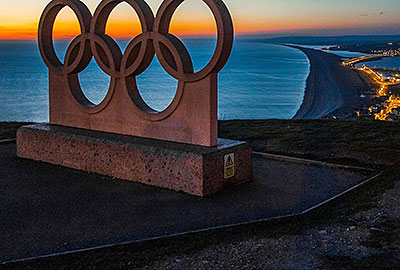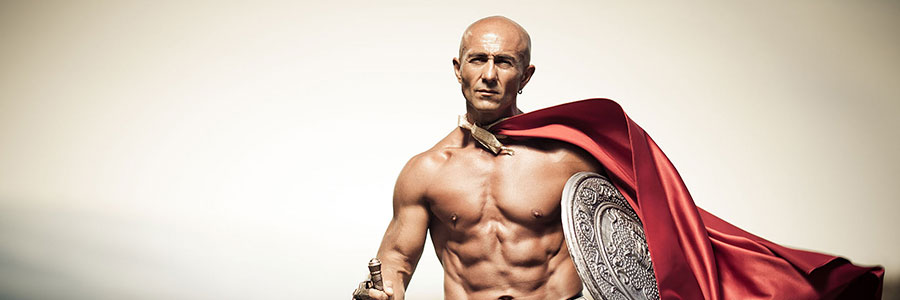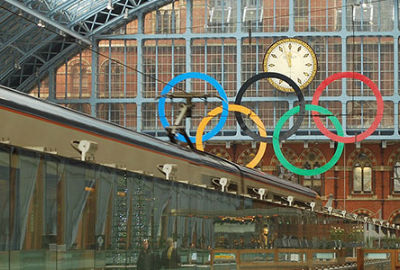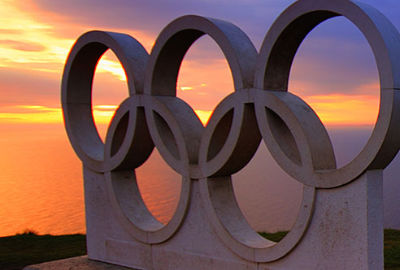 2021-10-07
2021-10-07

A Day at the Ancient Olympics
- ArticlesandContent.com (CIRCA 2005)
- /
- Oct 8, 2021 (written 2005)
Sports in ancient Greece were a critical part of the culture, and the prominence of the Olympic games is the clearest sign of that.
The ancient Olympic games were, as they are today, quite a happening. People came from far and wide to participate in the games or watch the athletes The ancient Olympic games began in 776B.C. and continued until 393A.D. Just as they have in the modern Olympics, ancient Olympic sports changed and expanded over time. Sports in ancient Greece were a critical part of the culture, and the prominence of the Olympic games is the clearest sign of that. The ancient Olympic games were also a part of a cycle of sporting events, including games at Corinth, Delphi and Nemea. By the height of the games, they were a five day festival of ancient Greek sports, with three days devoted to competition.
The Trip to Olympia
Many ancient Greek men of wealth made the journey to see the ancient Olympic sports played live. The city of Olympia was a religious center, and the games began as a way to honor the gods of ancient Greece. Olympia is easy to reach by ship, and athletes and spectators traveled from as far away as Spain, the Black Sea and Egypt. An international truce was declared for a month before the games to allow people to travel to Olympia for to participate in or watch ancient Olympic sports. If you were traveling to the games, you likely had a long, but not terribly dangerous journey before you. Married women were not allowed to attend, even as a spectator; however, young unmarried women could attend. The trip itself was costly; however, athletes might well have been sponsored by a wealthy individual. In order to participate in ancient Olympic sports, you had to be a young man, Greek or from a Greek colony, and capable of speaking Greek and born free. Furthermore, you had to swear before a statue of Zeus that you had trained for ten months. Just like modern competitors, ancient Greek athletes had to train at Olympia for a month prior to the games.
A Day at the Games
While in 776B.C., at the first games, the only ancient Greek sport was the stadion race, a variety of other games were added in later years. By the height of the ancient Olympics, a large number of sports in ancient Greece were introduced, including chariot racing, boxing, wrestling, javelin and discus throwing. Many spectators, save the very wealthy, simply slept under the stars. The very rich brought tents and even servants along to make sure they were comfortable while watching the array of ancient Greek sports. Merchants and crafts people of all sorts sold everything from food to souvenir items at the ancient Olympic games, and some of these souvenirs exist even today . Spectators would have spent time not only watching ancient Greek sports, but also in religious rituals of various sorts and even watching other performances, including poetry and rhetoric.
Training for the Ancient Olympics
In ancient Greece, training for the Olympics was more than just an activity it was a way of life. Competitors were practically born in to the sport; physical sports training began at an early age and was considered an essential part of daily life in ancient Greece. Some philosophers, including Aristotle, argued with the Ancient Greek sports-oriented mentality, stating that pubescent boys should spend more time on intellectual exercises; so there was generally a three-year hiatus from physical exertion while the boys studied, and it was only after this time that they could choose to become Olympic competitors. Training for the Ancient Greek Olympics involved a complex routine of exercises, including cardio-vascular, stamina, strength, and endurance routines.
In order to even qualify for the great sport, competitors had to undergo a minimum of ten months in an intensive physical training program. Some at tempted this grueling ordeal on their own, but the vast majority hired a personal trainer who would personally put them through the hundreds of hurdles to becoming a successful competitor. These trainers were of tenex-athletes themselves, and had their own ideas about what it took to become an Olympic champion. They had a reputation for being harsh, even cruel; the hardest trainers, however, were of ten the most highly sought after, as it was believed that they would drive their subjects to the highest levels of athletic excellence through their harshness.
Ancient Greek Sporting Events
By the 7th century, the Olympics had expanded to include over a score of different competitions, including chariot racing, discus throwing, pencracium(a barbaric mixture of boxing and wrestling which of ten and popularly ended in the breaking of the opponents fingers), the pentathlon, and many others, including the traditional genres of wrestling, running, swimming, etc. Not all of these events, however, were open on a yearly basis; the regulators chose two, three, or four of the competitions to be held each Olympics so that spectators would not become bored with the same events.
The most popular of the sports in Ancient Greece was Chariot Racing, a spectacular event in which two competing chariots raced furiously around a tiny track, doing everything in their power both to win and to prevent the other person from winning. Fighting dirty by crashing into the other chariot or spooking the horses was both all owed and applauded enthusiastically; this aggressive sporting led nicely in to the later Romandomination, which turned the games from a sporting event into a gruesome spectacle of gladiators and arenas. In 720BC, nudity, which was already a popular factor at the ancient Olympic sports, became a requirement; all competitors were required to strip down and bare all as a mark of their equality. Women were exempt from this requirement, but then, women were also exempt from competing.
The Ancient Olympic Experience
Those participating in the great games, as well as those attending, were presented with a fantastic feast for the eyes and the stomach. A five-day spread of food was prepared, and attendees flocked from miles away to enjoy the spectacle and the feast. The games were organized in honor of the Greek God Zeus, whose image rose thirteen meters tall over the assembly, encrusted with gold and ivory. Women were banned from the event, although they had their own event, called Heraia, to compete in.
Unlike modern times, the Olympics were more than a sporting event for the competitors. Those who did well were treated like celebrities upon their return home, given free food and drink and of ten elected to important positions as officials of their cities. They also did not compete as representatives of their cities of states but rather as individuals, for the glory of the sport, of Greece, and of the gods that they honored.
The Winners of the Ancient Olympic Sports
Sports in ancient Greece were an important part of the overall culture, and the athlete, nude and in top physical condition, personified this. Athletes competed in a variety of sports, ranging from simple foot races to violent boxing matches, complete with leather gloves weighted with metal. While most events were closed to women, who could participate in their own athletic competitions, women could participate in equestrian events as the owner of a chariot or horse at the ancient Olympi cgames.Fines were levied on athletes or trainers found guilty of cheating.
At the end of the games, there was a full day long banquet, consisting of 100 oxen that had been sacrificed to Zeus. In ancient Greece, sports were about more than who won, but also a competition in honor of the gods. Winners were awarded an olive branch or crown of olive leaves, and often returned home to considerable honors, including gifts of money from their city. Sculptors might well sculpt them, and they would have earned fame with their victory in ancient Greek sports. They also had the right to have their sculpture placed in Olympia.
Sports in ancient Greece were a part of daily life for many people, as they practiced wrestling or other activities for exercise. This served to ensure that they were in good health, kept a good physique and were prepared for war. Given this, it is no surprise that athletes in ancient Greece, sports of all sorts, and the ancient Olympic games were an important cultural event every four years. They were, more over , quite a party with rituals, vendors, poetry and a huge crowd on the Olympic grounds in Olympia, Greece.
As the event grew in popularity, competitors were drawn from all over the world to try their hand at the great games. The competition became more and more intense, beginning to swell with more participants as well as more events. In the 7th century, it had become a massive event with hundreds of competitors and over twenty-three categories to compete in.
People are quite surprised to find out that the history of the Easter Bunny is a lot older than they think. In fact the history of the bunny goes back many hundreds of years to Saxon times.



